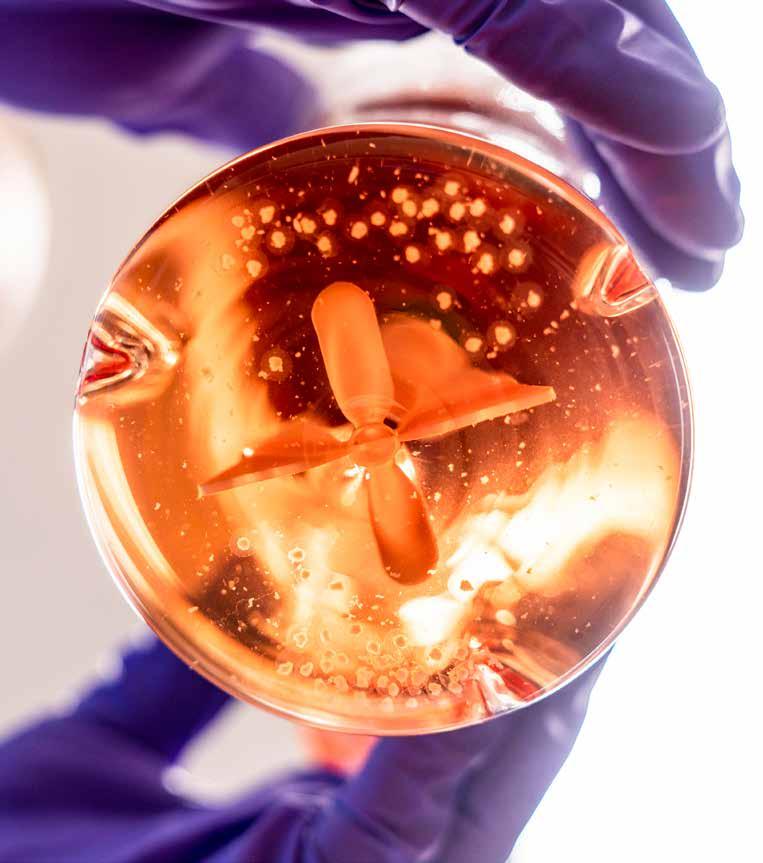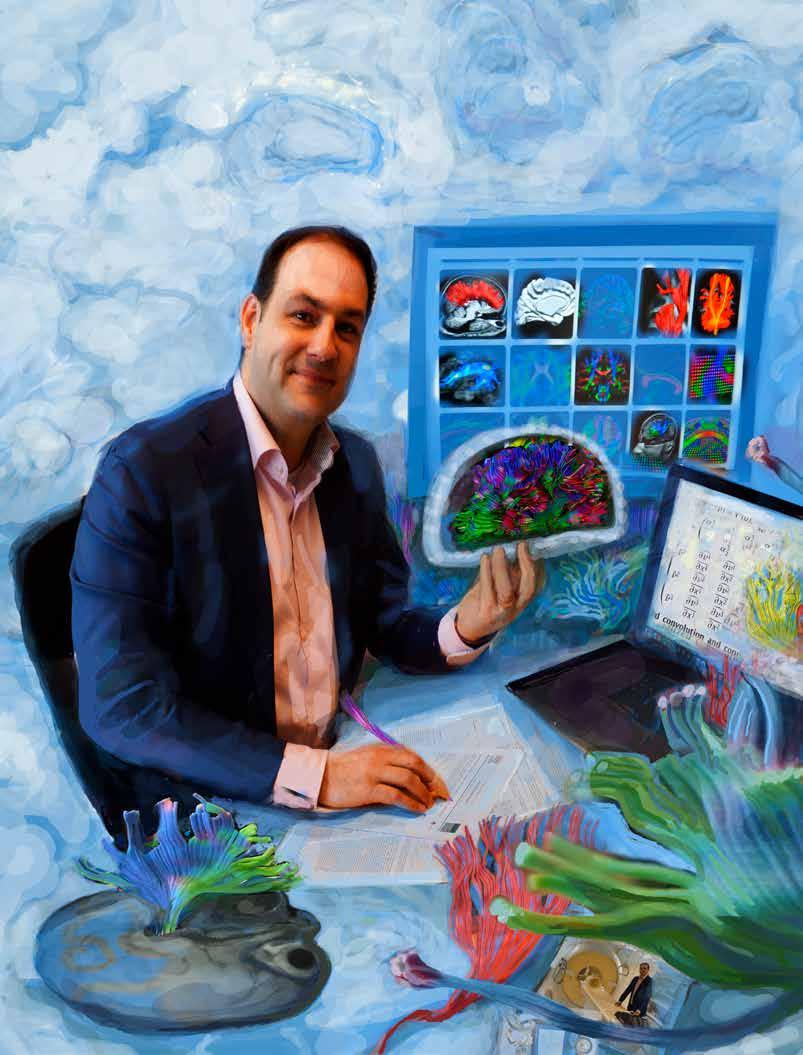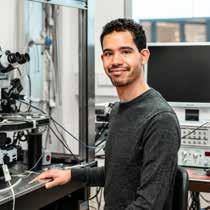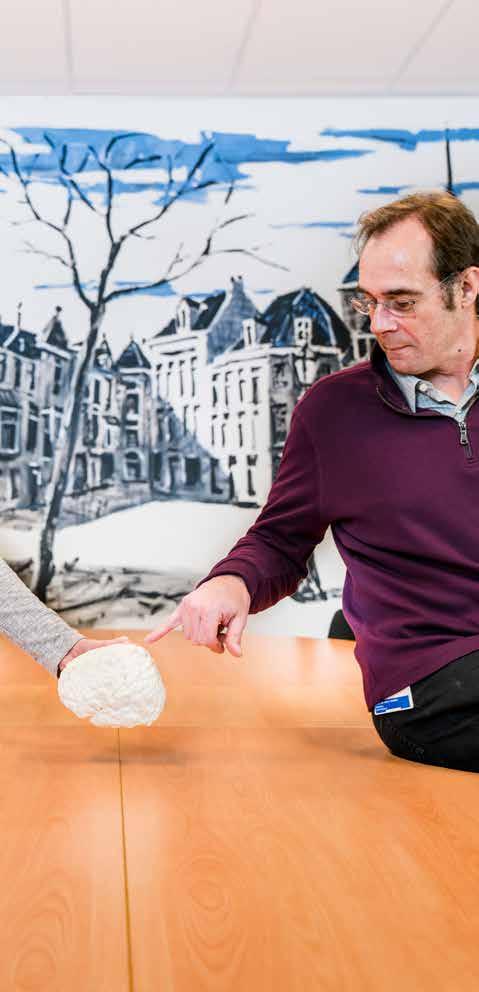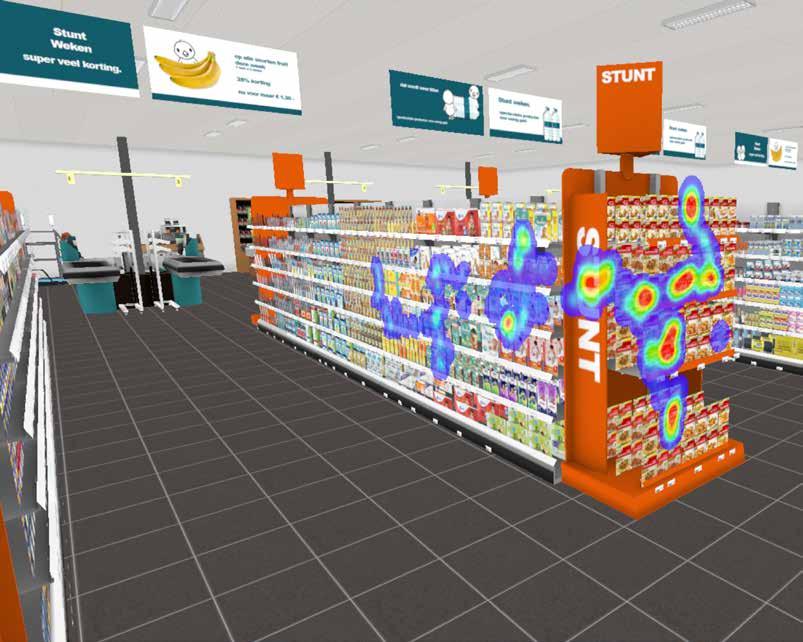Home made Brain organoids are not real brains; they cannot be used as replacement organs in case of brain damage. But these artificially grown, living mini-brains made of human cells do offer a unique opportunity to unravel the dynamics of brain cells. By Marieke Buijs Images: Bram Belloni
N
euroscientist Paul Ormel puts on a white lab coat and squeezes his hands into purple latex gloves. Just to be sure, he spritzes them with alcohol. Now he is ready to fish out container ‘#2 22/11/18 ProLabb’ from a swinging rack in the incubator. The clear plastic dish looks deceptively ordinary as the casing of a creation that is everything but ordinary. There they are, floating in a thin layer of clear pink fluid. Four mini-brains. Dull, pale pink lumps, roughly half a centimeter in diameter, with random dents and bulges. These are brain organoids. Tiny brain structures made of human cells. Thought of and created by humans. Developed thanks to ingenious molecular tricks in the high-tech equivalent of a human uterus: nutrient-rich fluid that is carefully kept at body temperature. These are the creations that should help scientists figure out how the brain develops and what goes wrong in conditions like Alzheimer’s, ALS, and schizophrenia.
From the lab In the summer of 2013, a shudder went through the world of brain research. Bioengineer Madeline Lancaster and her col26 | New Scientist | Brain Center Rudolf Magnus
leagues described how they managed to grow mini-brains in the prestigious scientific journal Nature. To Professor of Translational Neurosciences Jeroen Pasterkamp of UMC Utrecht it was instantly clear that this was a breakthrough. He began setting up a lab to create and, in particular, to study brain organoids. After the start-up and development stages, the first experiments in schizophrenia and ALS are now under way, and soon an organoid study of Alzheimer’s will begin. The human brain is a collection of some 90 billion nerve cells that each have an estimated 7,000 communication links to other cells. This inconceivably complex information network plays a role in everything we do; from walking to having a discussion in a café, and from falling asleep to daydreaming. A vital organ. And, therefore, well hidden, floating in shock-absorbing brain fluid and packaged in a thick layer of bone – the scull. Both this complexity and thorough packaging put scientists in an awkward position. How do you discover where things are going wrong when someone develops amnesia or when speech becomes distorted? Taking a peek, touching the tissue or put-


